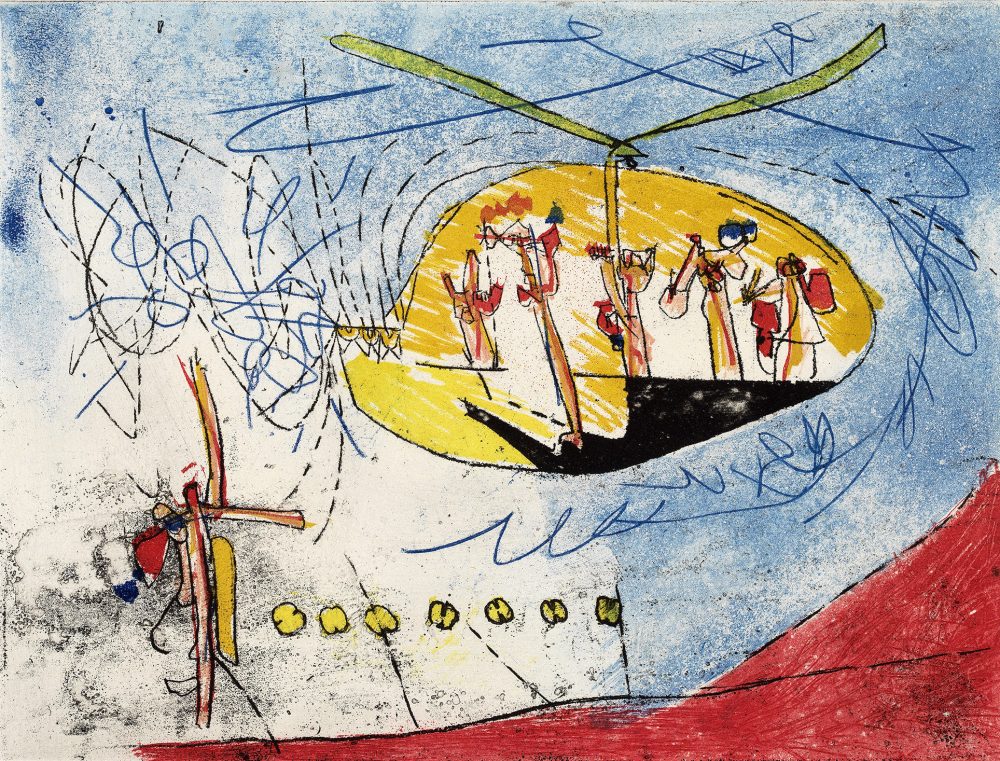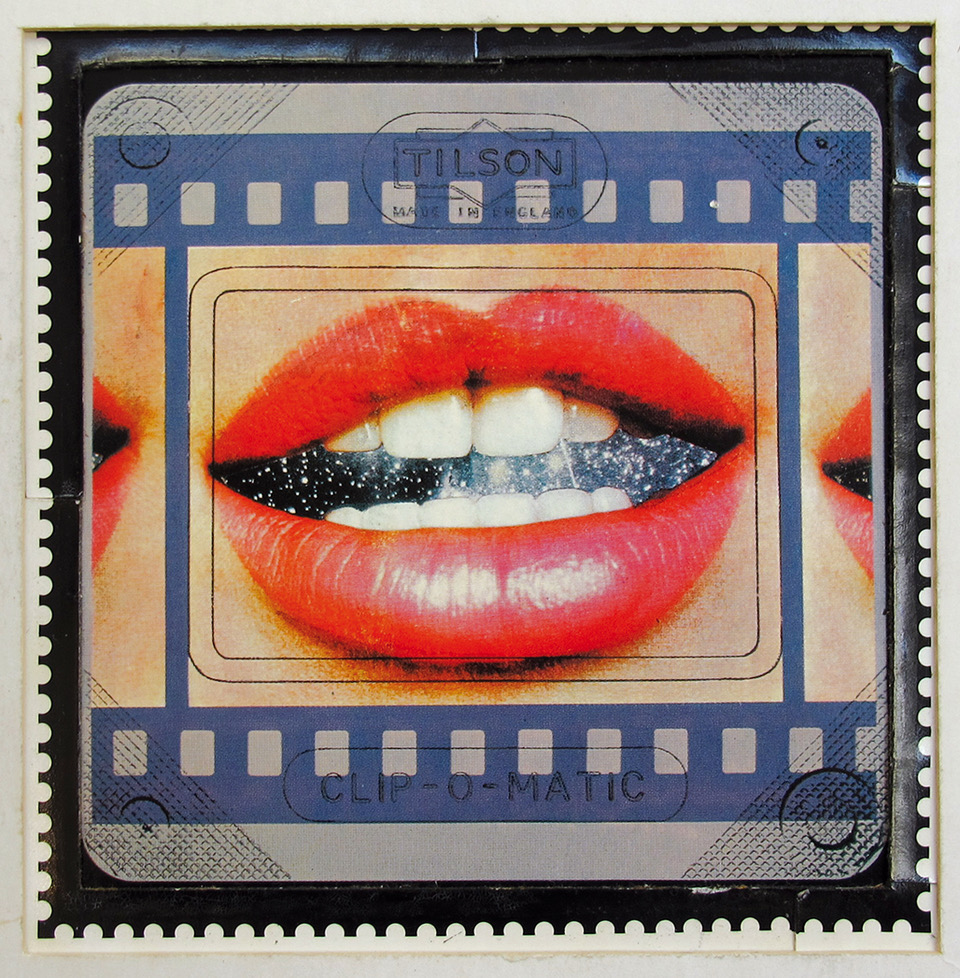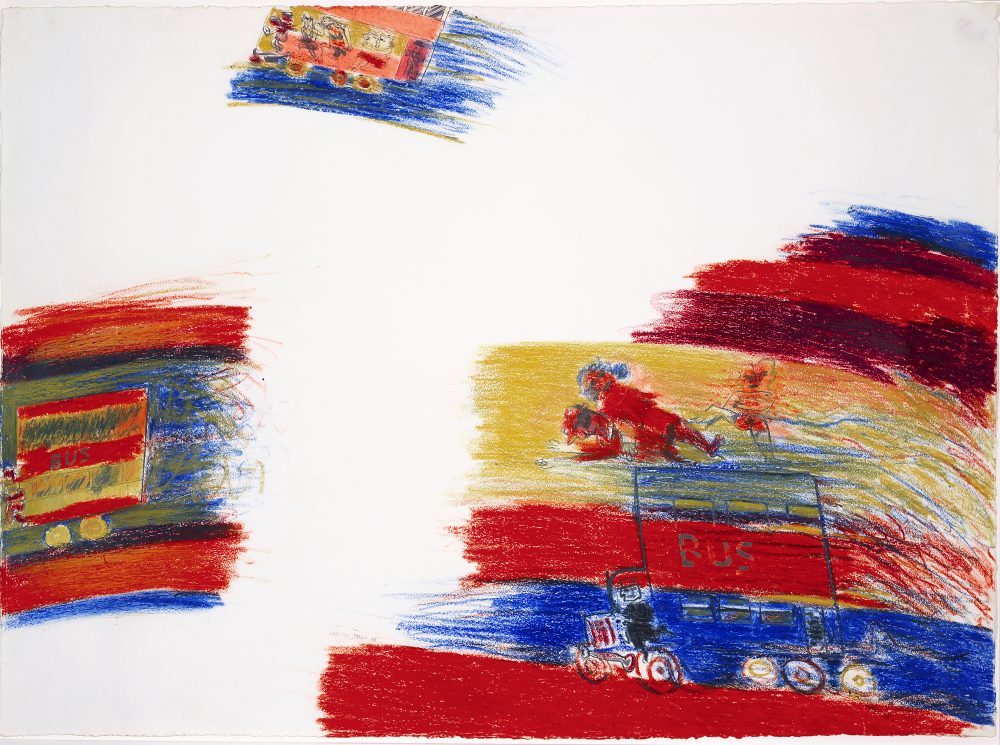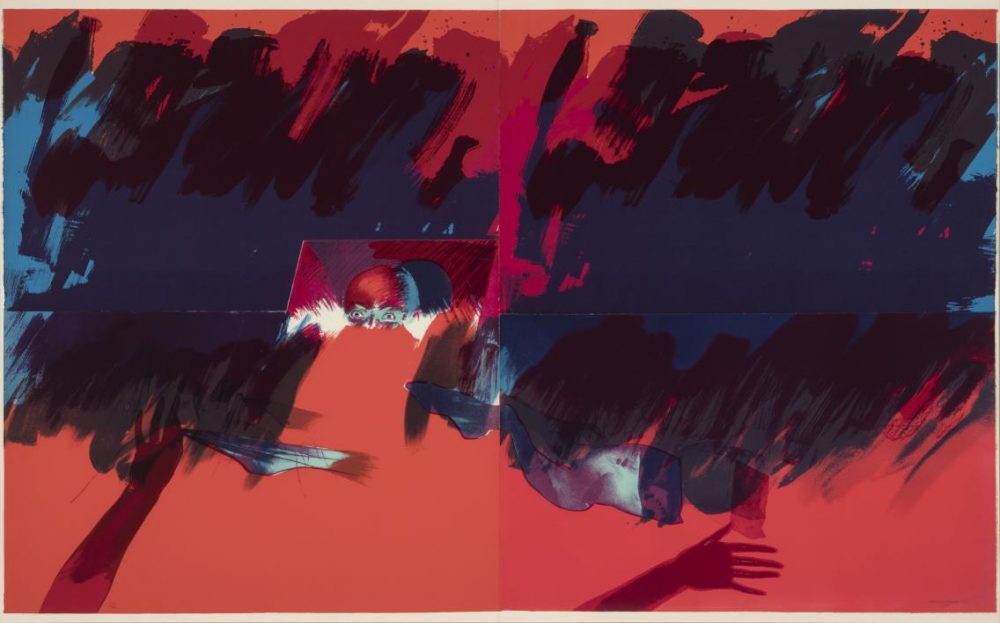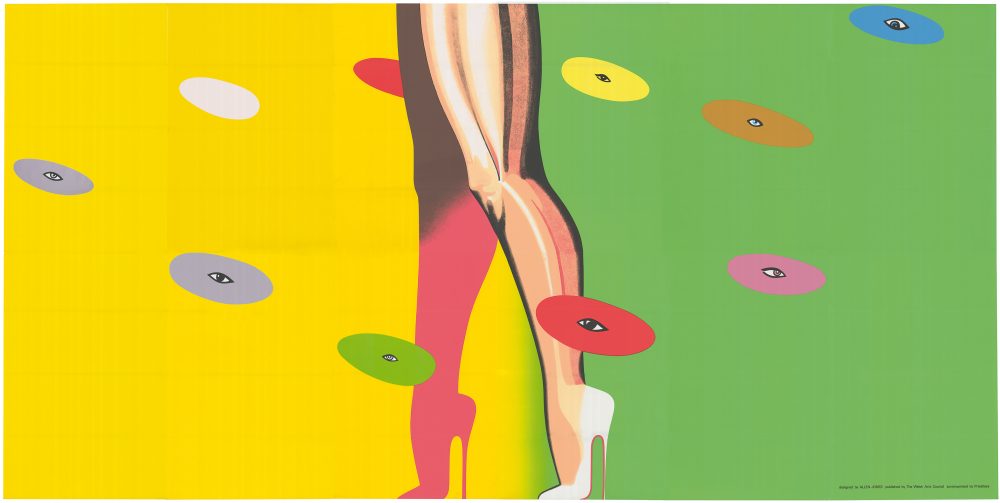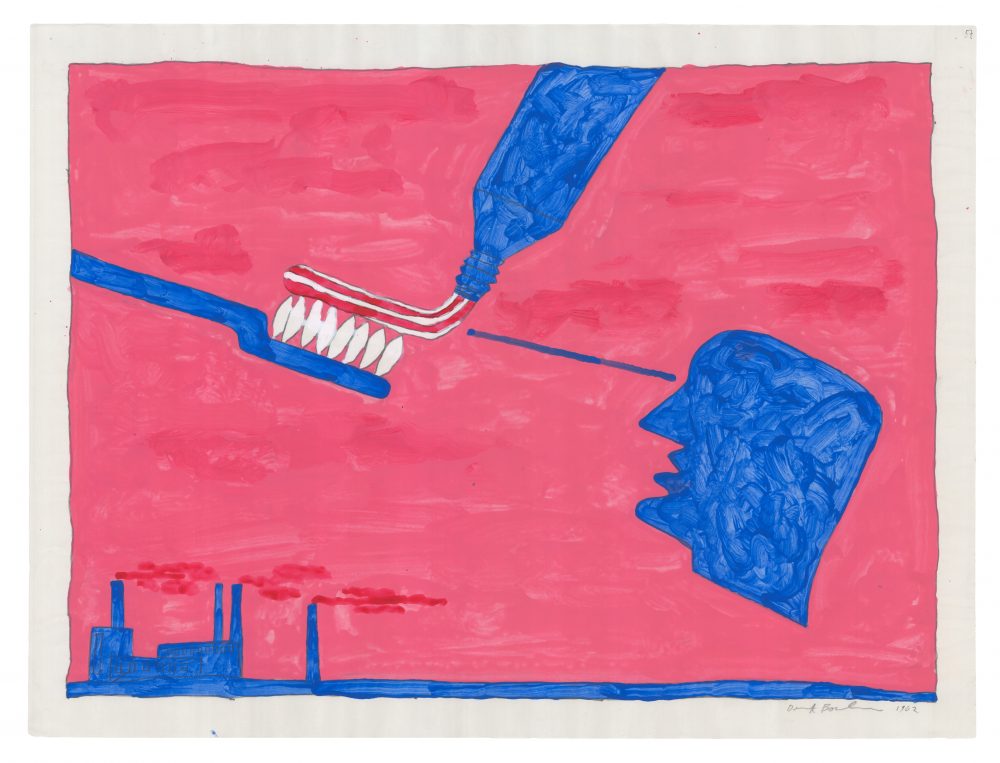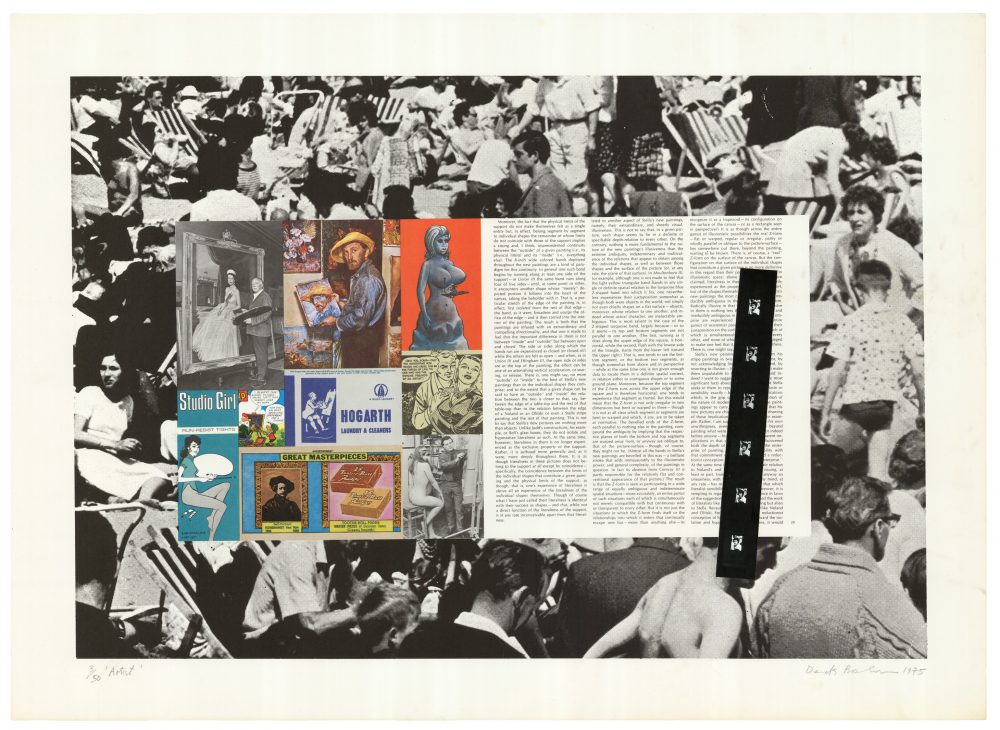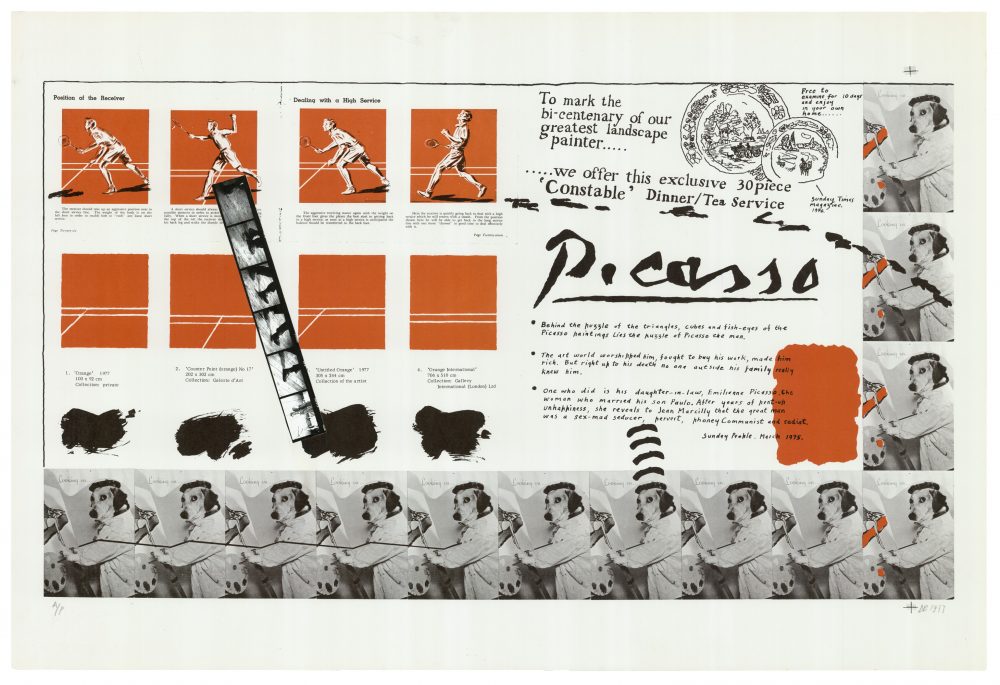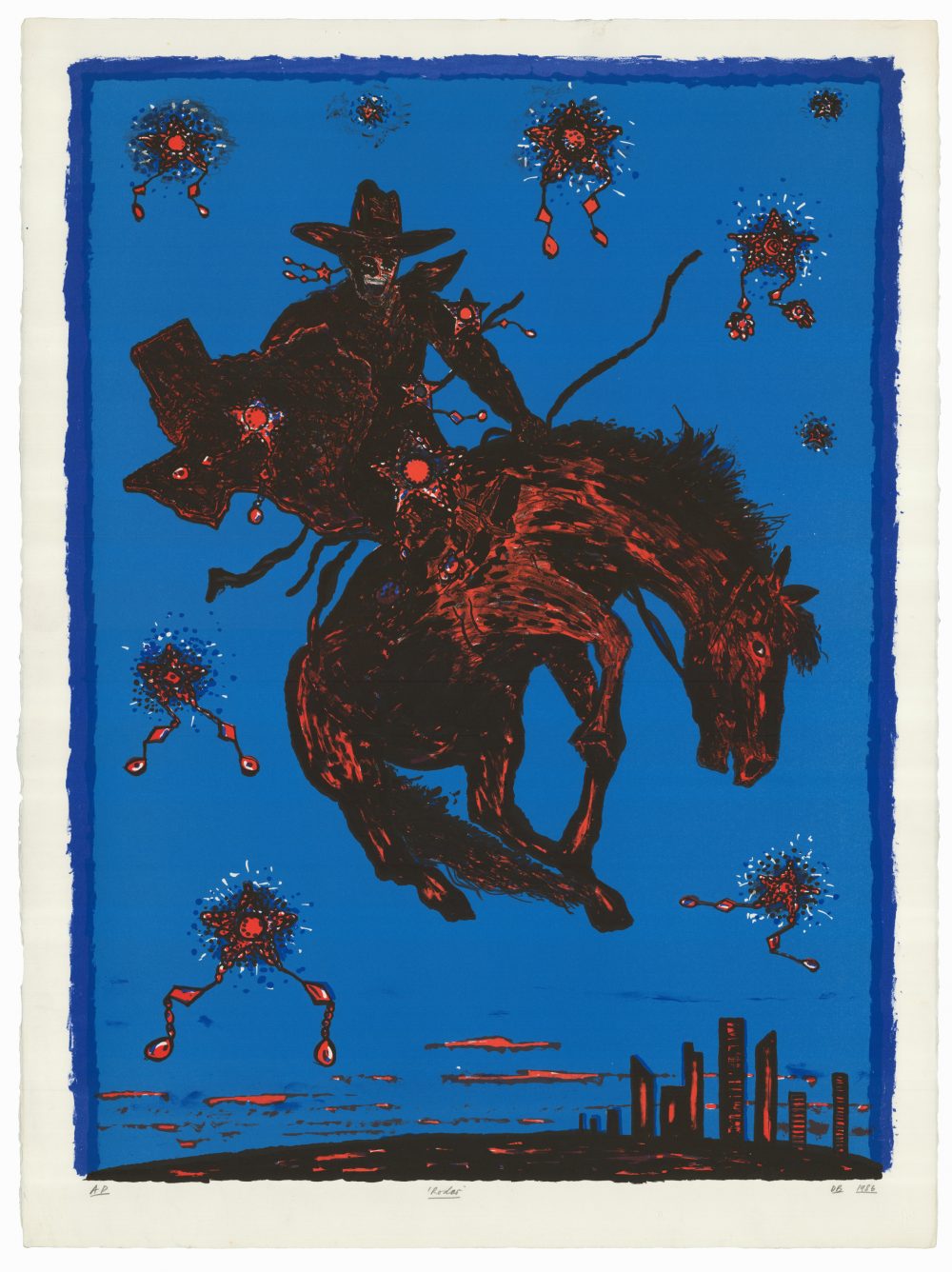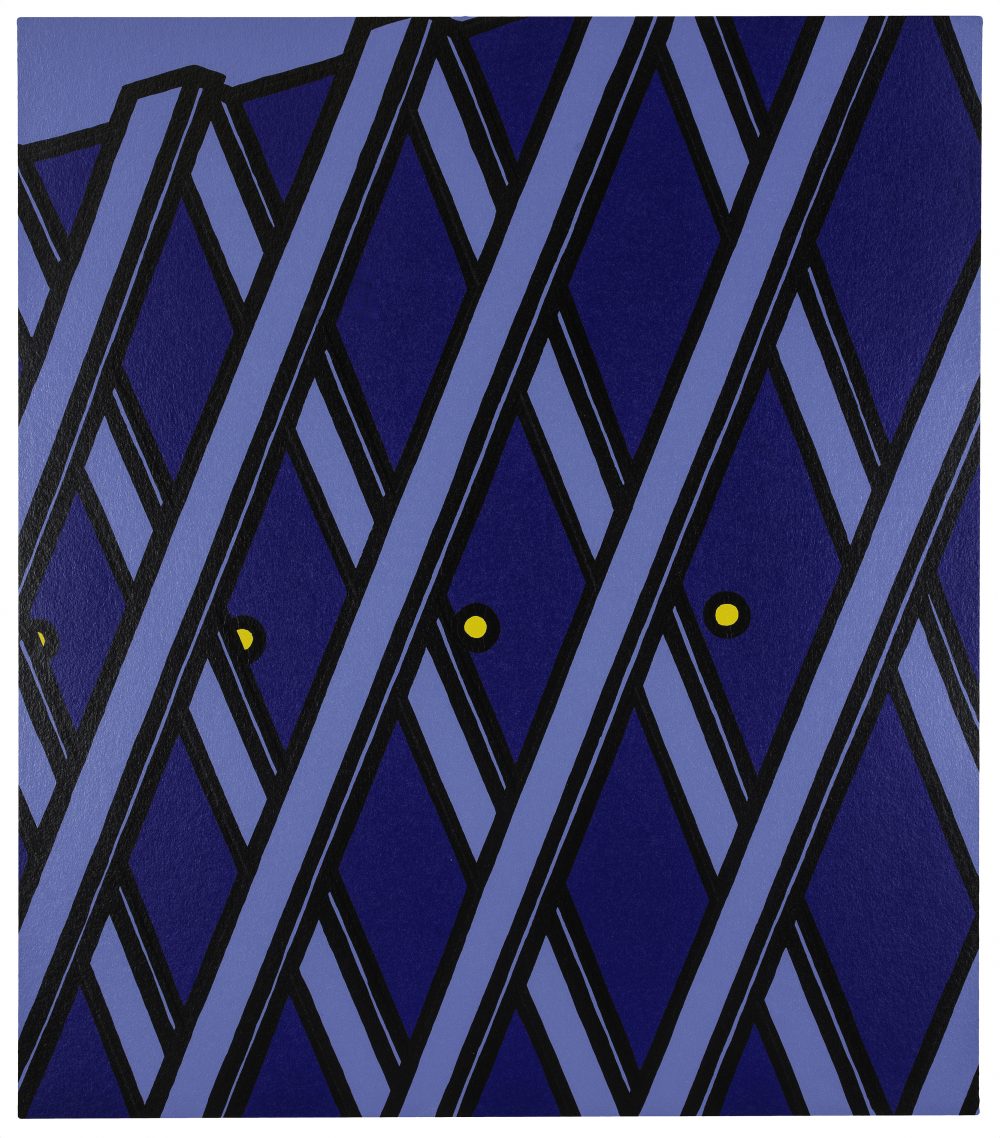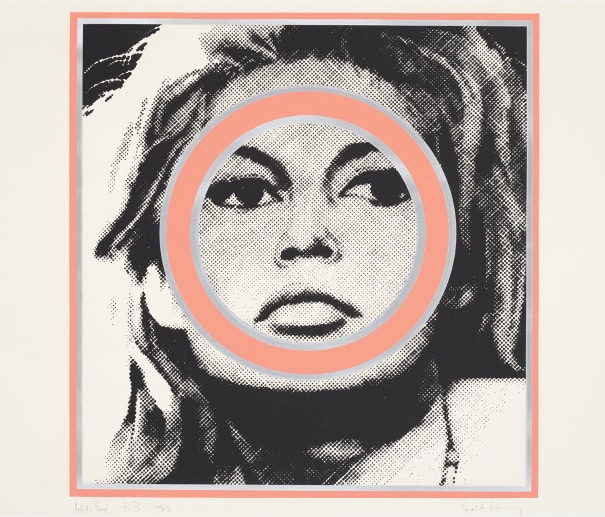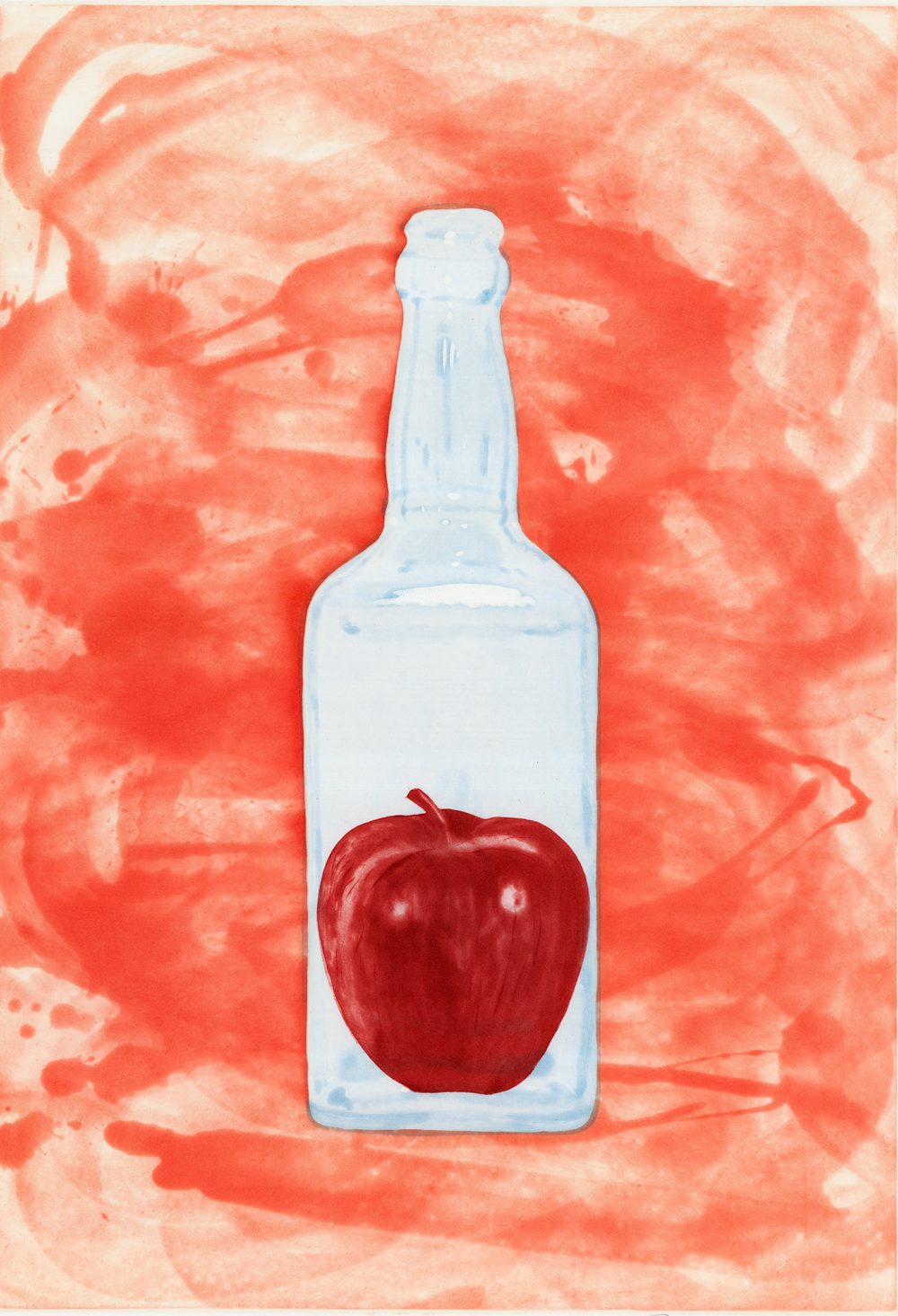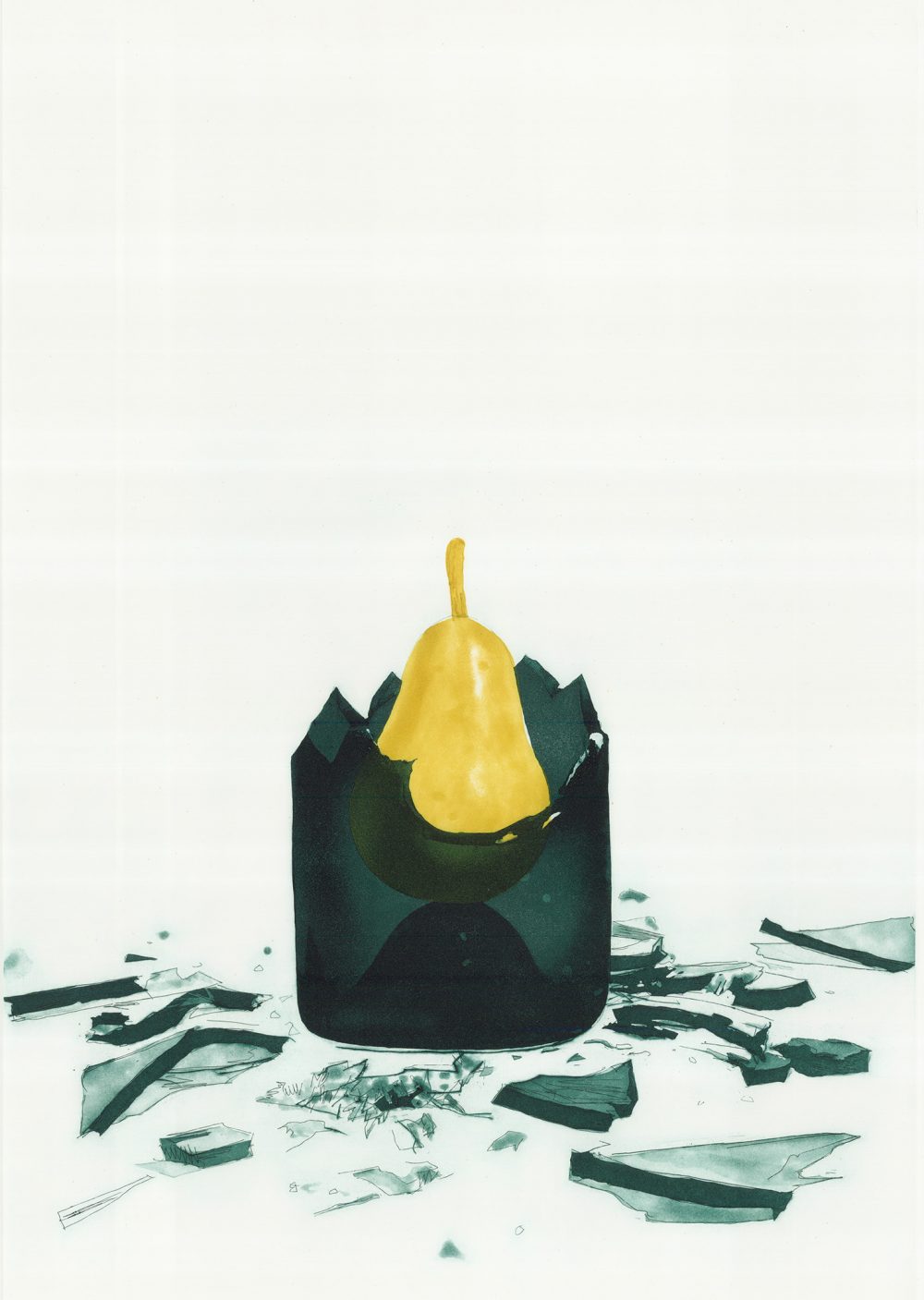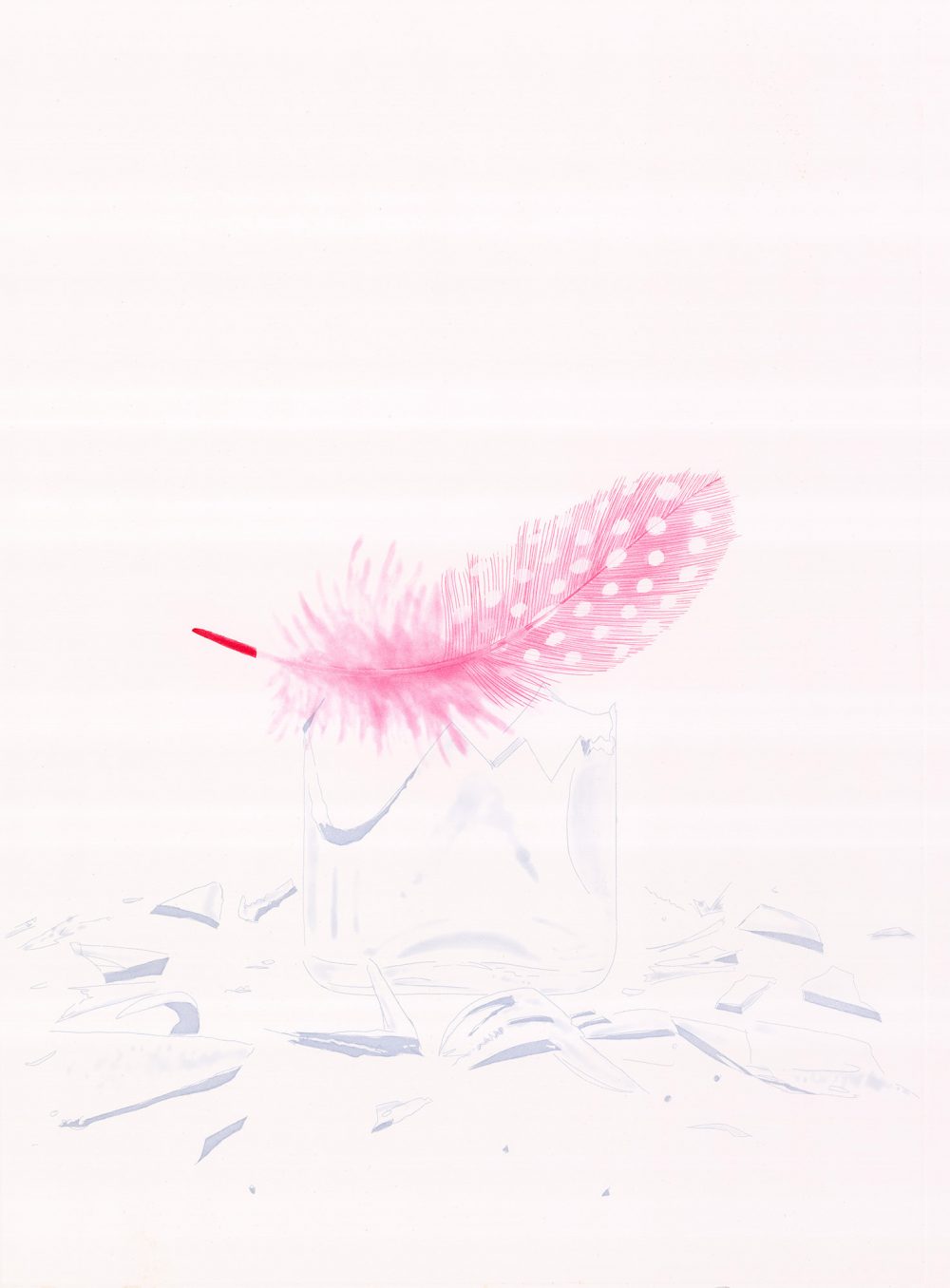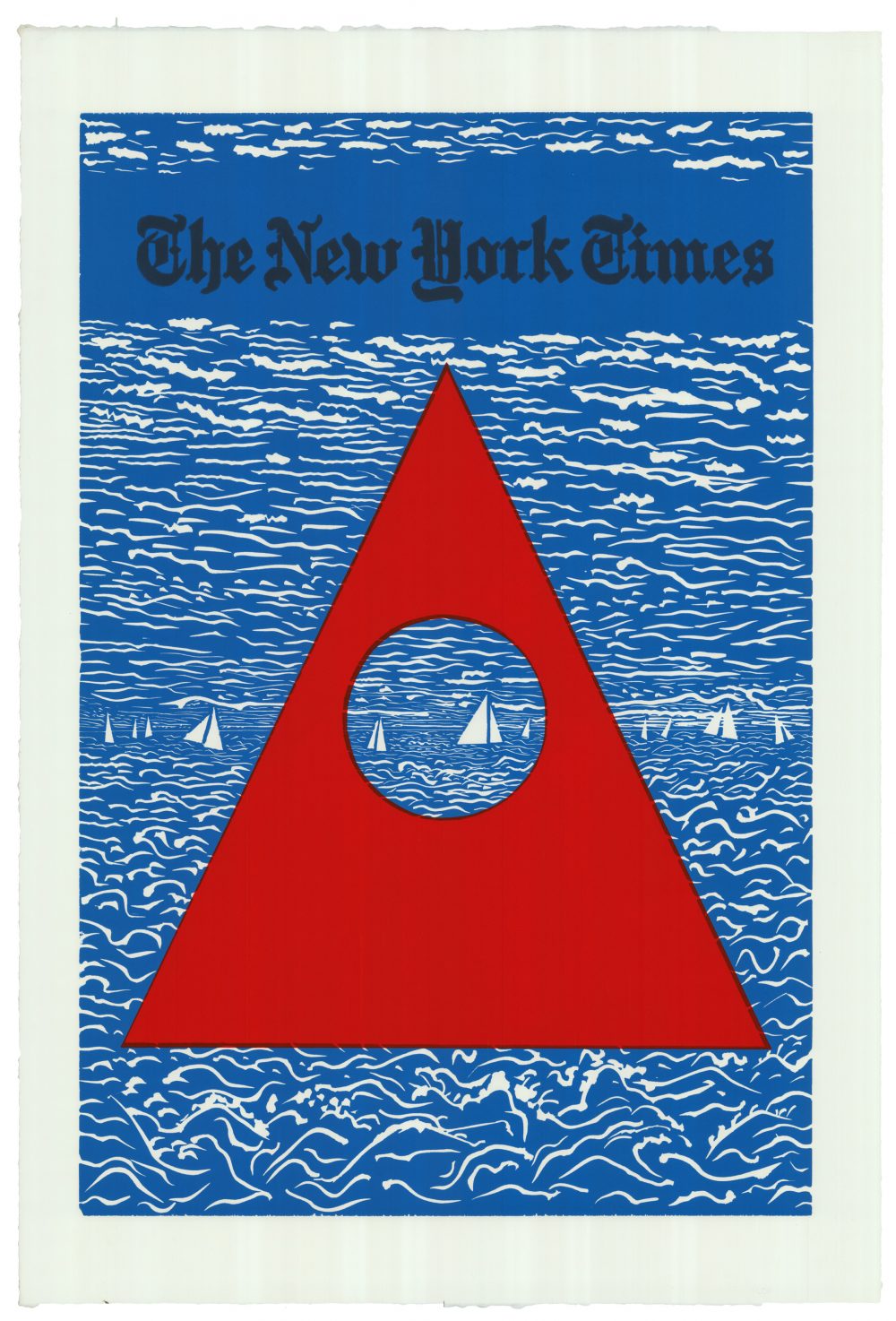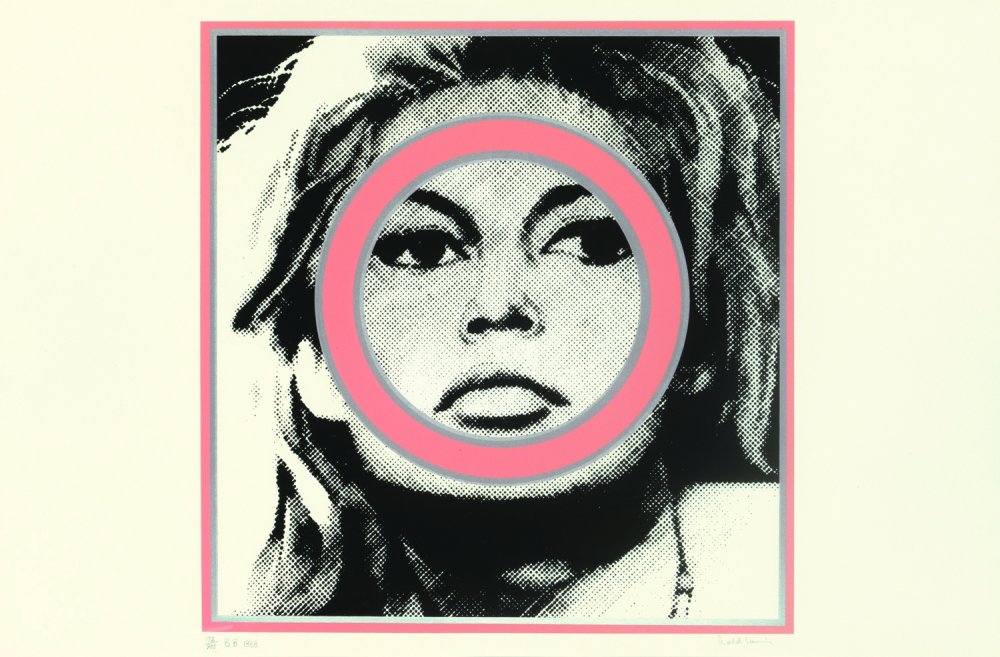Pop Art in Print
Please provide us with a few details to progress to the viewing room
Thank you for your enquiry
We will be in touch shortly.
Pop Art in Print
2 - 30th August 2021
Online Exhibition
Although Pop Art is often perceived to be a movement that began in America with artists including Andy Warhol and Roy Lichtenstein, it was in fact a phenomenon that developed almost simultaneously in the USA and Britain in the 1950s and early 1960s.
We are pleased to present a new online exhibition in collaboration with Sims Reed Rare Books, exploring the parallels in artistic thought, subject and processes between American and British Pop artists.
In Britain, it had its roots in the Independent Group, which was part of the Institute of Contemporary Art in London, in 1952-53. Leading artists involved included Richard Hamilton and Eduardo Paolozzi. In 1956 the Independent Group hosted the exhibition This is Tomorrow at the Whitechapel Gallery in London – a ground-breaking exhibition which has become known as a pivotal exhibition during the British Pop Art movement. The works created by this group of artists were self-aware – and often critical – investigations into pop culture.
This critical perspective is exemplified in Eduardo Paolozzi’s Moonstrips Empire News. The imagery from the 100 loose-leaf screenprints are drawn from diverse source material ranging from cartoons to scientific handbooks, classical icons to kitsch, machine parts to geometric patterns. They culminate in an eclectic, satirical and irreverent vision of over-saturation and excess in mass media culture. To view more images click here.
Similarly, the series Z.E.E.P. – from which we present two screenprints – shows a bold assortment of colours, magazine images, diagrams and comic-strips. By printing the screenprints on Perspex, Paolozzi nods to commercial printmaking and Pop Art.
The artists Allen Jones, Derek Boshier, Ralph Steadman, Eduardo Paolozzi, Joe Tilson and David Hockney – among others – rallied together to produce a collection of stamps and archival material for Culture Carriers Stamp Out Art in consequence of the prolonged postal strike of 1971. The funds raised were in support of the Postal Worker’s Union.
A collection of the published stamps and additional original and archival material for the ‘CULTURE*CARRIERS STAMP*OUT*ART’ project and action issued in support of Postal Worker’s Union during their strike in 1971, with works by Allen Jones, Eduardo Paolozzi, Ralph Steadman, Derek Boshier, Joe Tilson, David Hockney, Ivor Abrahams, et al. Various forms and sizes. (London. Edizioni O. 1971).
Much of this material is for stamps – or anti-stamps – that were published and issued and are familiar, however several of the items were not issued and the present material represents a valuable record of the wide scope of the original project. The material by Derek Boshier, for example, indicates that it had been planned to issue stamps with a variety of values (his designs for stamps valued ‘3p’, ‘4p’, ‘6p’, ‘8p’ which was issued, and ’10p’ are all here) while the Ivor Abrahams material suggests in its meticulous production that time constraints curtailed his contribution; we can trace no record of the work by Australian artist Philippe Mora (he signs himself simply ‘Mora’) while the ‘J G’ of the ‘0 NP’ stamp remains untraced.
During the 1971 postal strike, emergency measures were brought in to allow the licensing by the G. P. O. of those wishing to operate a temporary postal service. Several artists and poets, organised by Anthony Haden-Guest, started ‘Culture Carriers’ an ad hoc postal service cum art project, which intended to raise money for the strikers through the sale of artistic work with a postal theme, namely stamps. The publisher ‘Edizioni O’ agreed enthusiastically to act as a conduit for the ideas of the artists and the Mayfair Gallery agreed to market the works. The strike actually lasted three weeks, but the related art seems to have caused a longer lasting stir, eventually moving to Milan and Paris as an exhibition. The sales of the stamps were greatly enhanced by the artists’ signatures and initials on the stamps themselves and several thousand pounds were raised for the union.
The stamps produced are generally characteristic, the two Allen Jones designs are strikingly familiar as are those by Paolozzi, Tilson and Steadman, but the presence of the original artwork for many of the stamps marks this as an important document and resource relating to the near-forgotten consequence of a remote political scenario, a snapshot of a very different time. One of Allen Jones’ stamps (‘Stamp Out Art’) had widespread artistic and political consequences and inspired the exhibitions in Milan and Paris, giving them their title, as well as a number of militant Italian artists to issue their own political postcards along similar lines.
During this time, Richard Hamilton described the source material for his work, an expression that has become synonymous with the definition of Pop Art:
“Popular (designed for a mass audience); Transient (short term-solution); Expendable (easily forgotten); Low Cost; Mass Produced; Young (aimed at Youth); Witty; Sexy, Gimmicky; Glamorous; Big Business.”
– Richard Hamilton (1957)
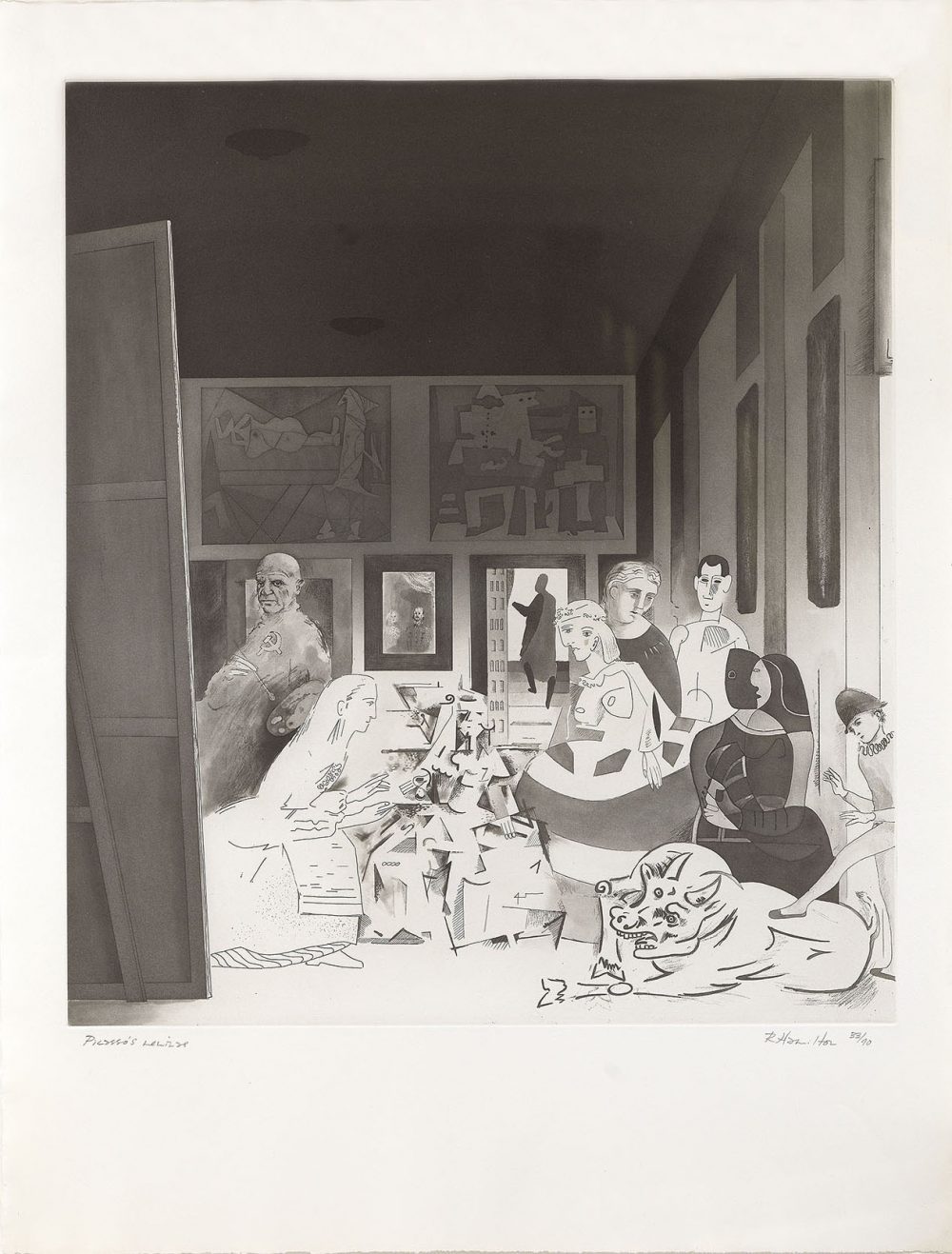
Etching with aquatint, roulette, and drypoint, 1973.
Signed in pencil and numbered from the edition of 120.
From: Hommage to Picasso.
Printed on Rives paper by Aldo Crommelynck, Paris.
Published by Propylaen Verlag, Berlin/Pantheon Press, Rome.
(Lullin 91).
80.5 x 63.2 cm.
Click here to view other works from Homage to Picasso portfolio.
While Eduardo Paolozzi and Richard Hamilton led the vanguard of the Pop Art movement, a younger generation was emerging. The 1961 ‘Young Contemporaries’ exhibition featured artists from a younger generation from the Royal College of Art in London. These figures included Allen Jones, David Hockney, Derek Boshier and Patrick Caulfield.
Lithograph printed in colours on four sheets of Arches paper, 1981.
Signed, dated and numbered in pencil from the edition of 80.
Printed by Ian Lawson, Hereford.
Published by Waddington Graphics, with their blindstamp.
122 x 202 cm.
Billboard poster comprising twelve screenprints on paper, 1967-68.
Published by the Welsh Arts Council, screenprinted by Priestleys.
203.2 x 457.2 cm
The Cross-Atlantic artistic exchange of ideas and influences from American counterparts inspired British artists and their work.
Photolithograph printed in colours with photo collage, 1975.
Signed, dated and titled in pencil, numbered from the edition of 50.
56.6 x 78.2 cm
Lithograph printed in colours with photo collage, 1977.
Signed, dated and titled in pencil, inscribed ‘AP’. One of four artist’s proofs aside from the edition of 50.
55.7 x 82.7 cm
Linocut printed in colours, 1997.
Signed, dated and titled in pencil. Inscribed ‘AP’, an artist’s proof aside from the edition o f 65.
S: 106 x 71.6 cm.
Lithograph printed in colours, 1986.
From the series ‘Celebrate Texas’.
Signed in pencil, inscribed ‘AP’. An artist’s proof aside from the edition of 75.
Printed by Peregrine Press, Dallas.
Published by Pepsi-Cola Bottling Group.
76.2 x 57 cm.
Screenprint in colours, 1973.
From ‘Some Poems of Jules Laforgue’.
Signed in pencil verso, numbered from the edition of 200.
Printed on Neobond synthetic wove paper by Frank Kicherer, Stuttgart.
Co-published by Petersburg Press and Waddington Galleries, London.
(Dempsey 38E).
40 x 35 cm.
Etching, 1986.
Signed in pencil, an artist’s proof aside from the edition of 10. Printed by Tyler Graphics Ltd. Published by David Hockney.
(Tokyo 259).
Plate: 17.5 x 22.3 cm.
Sheet: 76.2 x 57.2 cm.
David Hockney’s first visit to the USA in 1961 marked for him a prolific period of printmaking that was inspired by the libertarianism of America. British Pop contemporaries, historically over-shadowed by their American counterparts, began to make their mark.
After moving to New York in 1964, Gerald Laing was quickly integrated into the American counterpart of the movement, befriending the likes of James Rosenquist, Andy Warhol and Roy Lichtenstein. However, by the mid-1960s, Laing made a radical departure into sculpture, which coincided with leaving America. He would later return to Pop painting in the early 2000s.
Screenprint in colours, 1968.
Signed and dated in pencil. An artist’s proof aside from the edition of 200. Printed on smooth white paper by the artist. Published by the artist, with his blind stamp.
(Sims Reed 22)
Image: 57.4 x 82.2 cm
Sheet: 58.6 x 89 cm
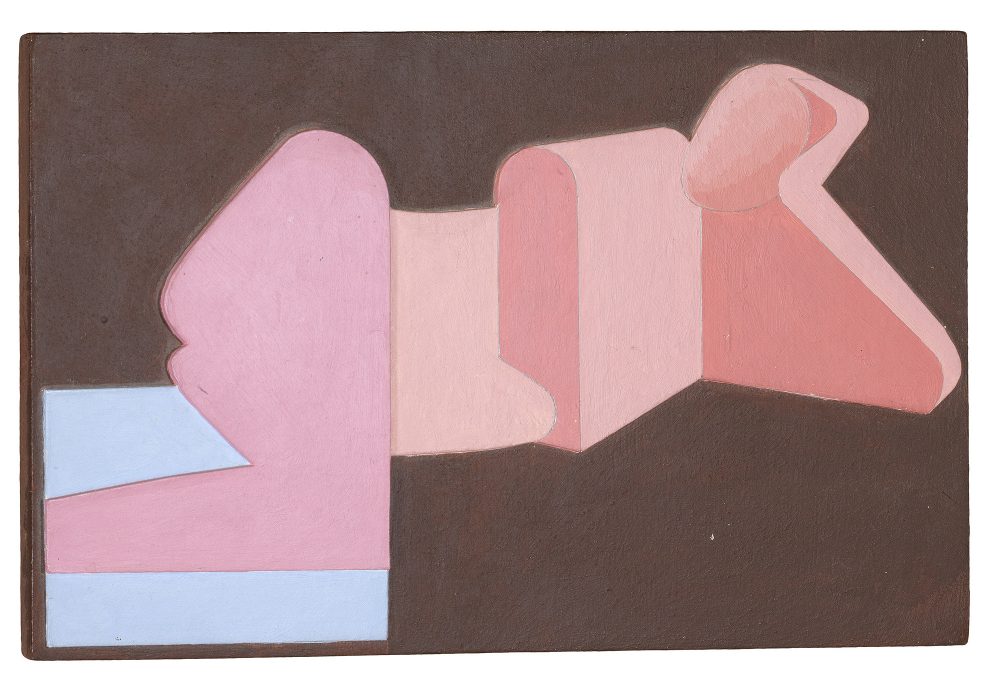
Screenprint in colours with silver leaf, 1963-2007
Signed in pencil and numbered from the edition of 60.
Printed on heavy wove paper by Advanced Graphics, London.
Published by Sims Reed, London.
110 x 150 cm
Etching and aquatint, 1981.
From ‘Glass Wishes’. Signed, titled and dated in pencil. Numbered from the edition of 59.
Printed and published by Gemini G.E.L., Los Angeles.
Published by Original Editions, New York.
85.1 x 67.3 cm
Etching with aquatint and drypoint, 1981.
From ‘Glass Wishes’. Signed, titled and dated in pencil. Numbered from the edition of 59.
Printed and published by Gemini G.E.L., Los Angeles.
85.1 x 67.3 cm
Etching & aquatint, 1982.
From ‘Glass Wishes’. Signed, titled and dated in pencil. Numbered from the edition of 59.
Printed and published by Gemini G.E.L., Los Angeles.
85.1 x 67.3 cm
The pairing of American and British Pop artists characterises how divergent attitudes to making art had become in the latter half of the twentieth century, and how attempts to map the seemingly disparate artistic trajectories can reap revealing parallels in artistic thought.
Available Works:
A collection of the published stamps and additional original and archival material for the ‘CULTURE*CARRIERS STAMP*OUT*ART’ project and action issued in support of Postal Worker’s Union during their strike in 1971, with works by Allen Jones, Eduardo Paolozzi, Ralph Steadman, Derek Boshier, Joe Tilson, David Hockney, Ivor Abrahams, et al. Various forms and sizes. (London. Edizioni O. 1971).

Etching with aquatint, roulette, and drypoint, 1973.
Signed in pencil and numbered from the edition of 120.
From: Hommage to Picasso.
Printed on Rives paper by Aldo Crommelynck, Paris.
Published by Propylaen Verlag, Berlin/Pantheon Press, Rome.
(Lullin 91).
80.5 x 63.2 cm.
Click here to view other works from Homage to Picasso portfolio.
Unique screenprint, c. 1978
Stamped Andy Warhol Enterprises Inc. 1987, verso with the Andy Warhol Estate stamp and the Andy Warhol Authentication Board Inc. stamp numbered in pencil.
Printed on Curtis Rag paper by Rupert Jasen Smith, New York.
(Feldman and Schellmann IIIA.10)
114.2 x 89.1 cm
Billboard poster comprising twelve screenprints on paper, 1967-68.
Published by the Welsh Arts Council, screenprinted by Priestleys.
203.2 x 457.2 cm
Lithograph printed in colours on four sheets of Arches paper, 1981.
Signed, dated and numbered in pencil from the edition of 80.
Printed by Ian Lawson, Hereford.
Published by Waddington Graphics, with their blindstamp.
122 x 202 cm.
Photolithograph printed in colours with photo collage, 1975.
Signed, dated and titled in pencil, numbered from the edition of 50.
56.6 x 78.2 cm
Lithograph printed in colours with photo collage, 1977.
Signed, dated and titled in pencil, inscribed ‘AP’. One of four artist’s proofs aside from the edition of 50.
55.7 x 82.7 cm
Linocut printed in colours, 1997.
Signed, dated and titled in pencil. Inscribed ‘AP’, an artist’s proof aside from the edition of 65.
106 x 71.6 cm.
Lithograph printed in colours, 1986.
From the series ‘Celebrate Texas’.
Signed in pencil, inscribed ‘AP’. An artist’s proof aside from the edition of 75.
Printed by Peregrine Press, Dallas.
Published by Pepsi-Cola Bottling Group.
76.2 x 57 cm.
Screenprint in colours, 1973.
From ‘Some Poems of Jules Laforgue’.
Signed in pencil verso, numbered from the edition of 200.
Printed on Neobond synthetic wove paper by Frank Kicherer, Stuttgart.
Co-published by Petersburg Press and Waddington Galleries, London.
(Dempsey 38E).
40 x 35 cm.
Etching, 1986.
Signed in pencil, an artist’s proof aside from the edition of 10. Printed by Tyler Graphics Ltd. Published by David Hockney.
(Tokyo 259).
Plate: 17.5 x 22.3 cm.
Sheet: 76.2 x 57.2 cm.
Screenprint in colours, 1968
Signed in pencil. Titled and dated in pencil. Numbered from the edition of 200.
Printed on smooth white paper by the artist.
Published by the artist with his blind stamp. (Ingram & Halliwell 22)
89 x 58.8 cm

Screenprint in colours with silver leaf, 1963-2007
Signed in pencil and numbered from the edition of 60.
Printed on heavy wove paper by Advanced Graphics, London.
Published by Sims Reed, London.
110 x 150 cm
Etching and aquatint, 1981.
From ‘Glass Wishes’. Signed, titled and dated in pencil. Numbered from the edition of 59.
Printed and published by Gemini G.E.L., Los Angeles.
Published by Original Editions, New York.
85.1 x 67.3 cm
Etching with aquatint and drypoint, 1981.
From ‘Glass Wishes’. Signed, titled and dated in pencil. Numbered from the edition of 59.
Printed and published by Gemini G.E.L., Los Angeles.
85.1 x 67.3 cm
Etching & aquatint, 1982.
From ‘Glass Wishes’. Signed, titled and dated in pencil. Numbered from the edition of 59.
Printed and published by Gemini G.E.L., Los Angeles.
85.1 x 67.3 cm
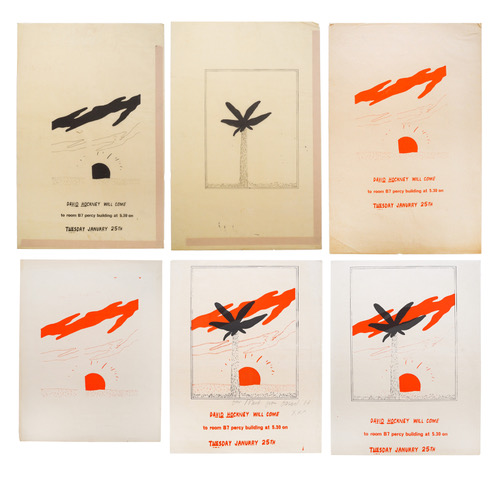
David Hockney
David Hockney Will Come
3rd - 24th October 2023
Online Exhibition
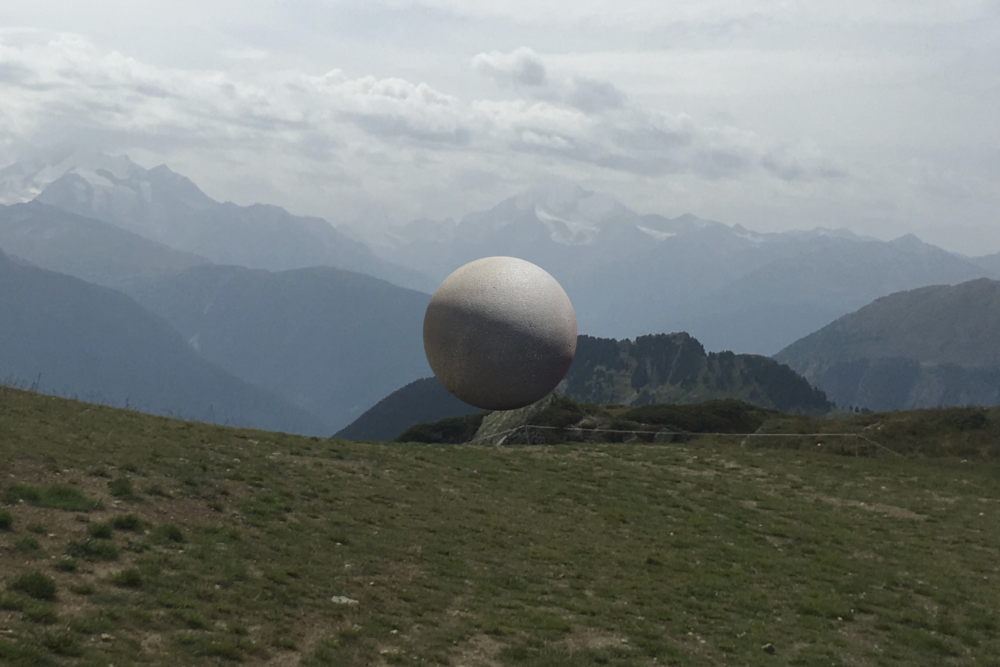
Ana Andreeva
IN CONTEXT
10.07.2023 - 10.08.2023



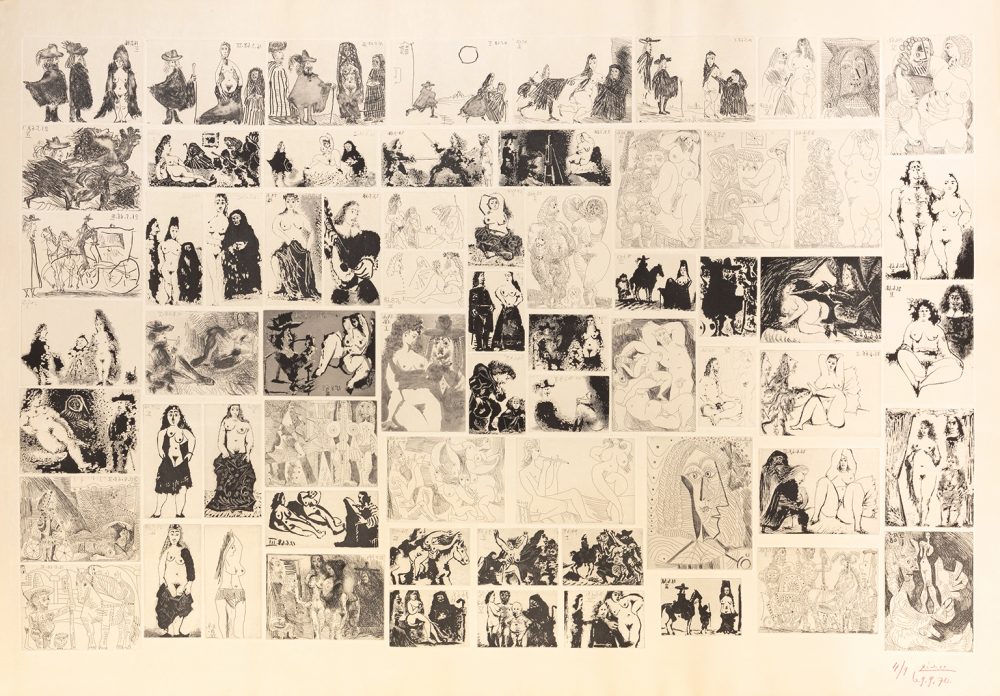
Pablo Picasso
La Célestine
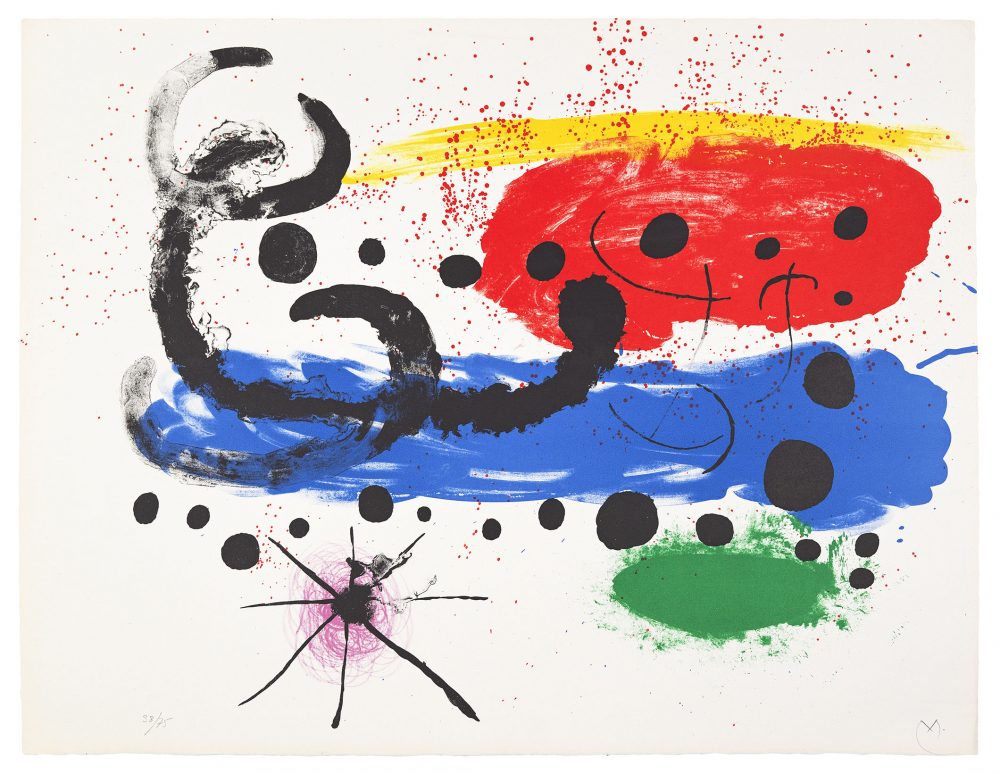
Joan Miró: Works from Album 19
8th March - 5th April 2022

Henry Moore
Sculptural Ideas
3rd February - 3rd March 2022
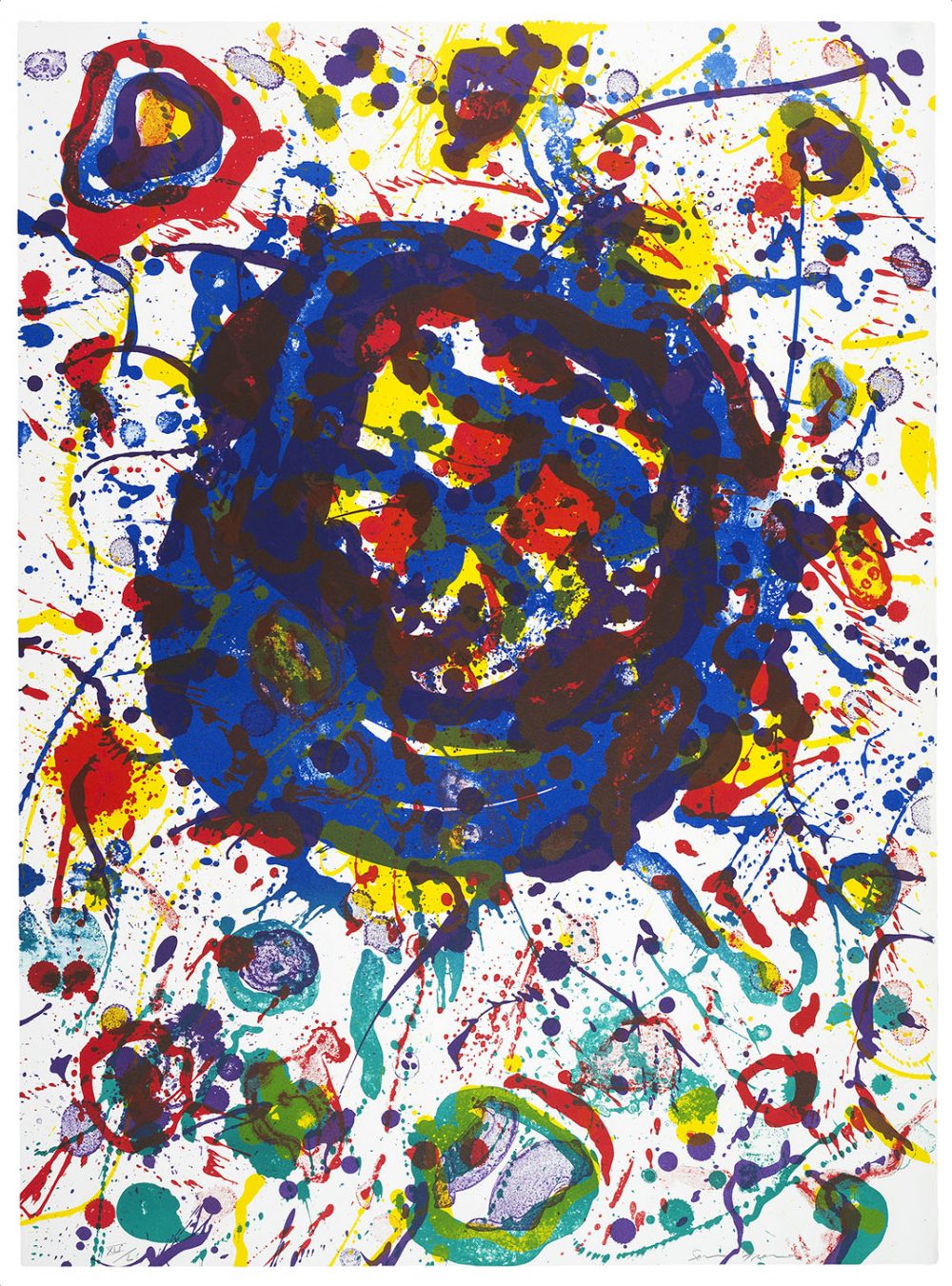
Sam Francis
Poèmes dans le Ciel (Poems in the Sky)
17th January - 21st February 2022
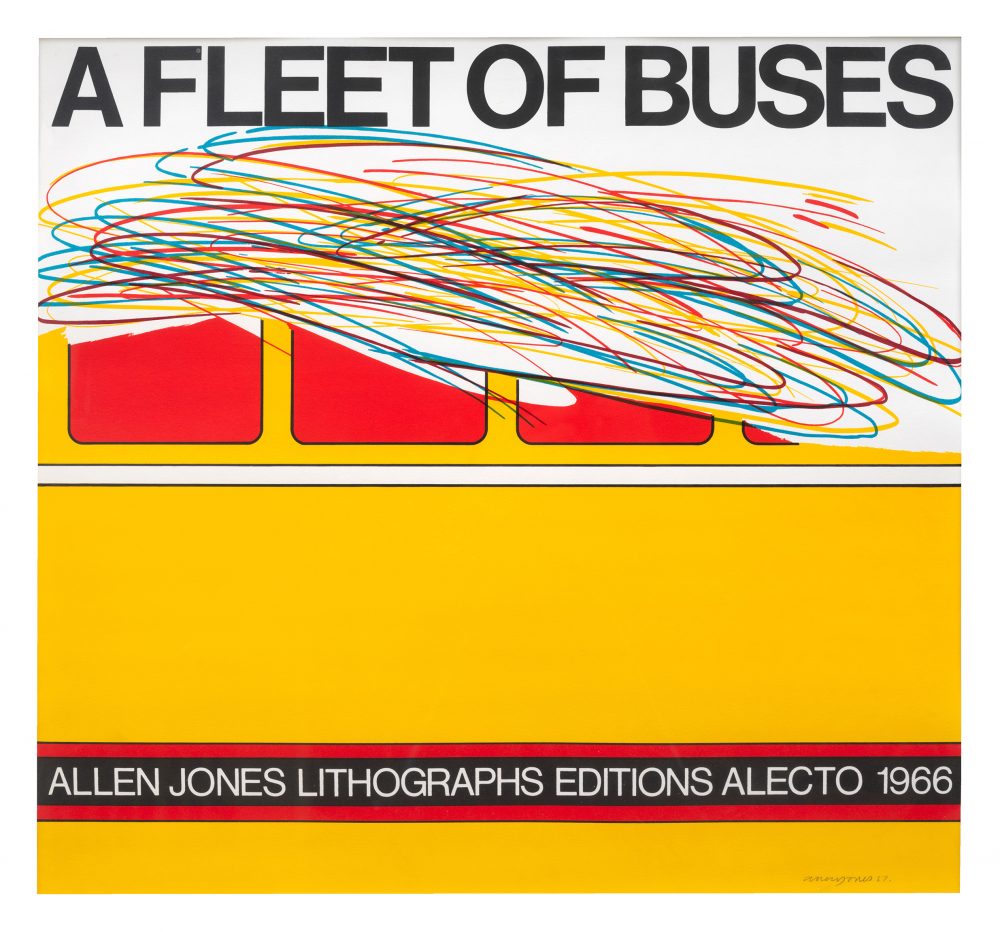
Allen Jones
A Fleet of Buses
1st November - 26th November
Online only
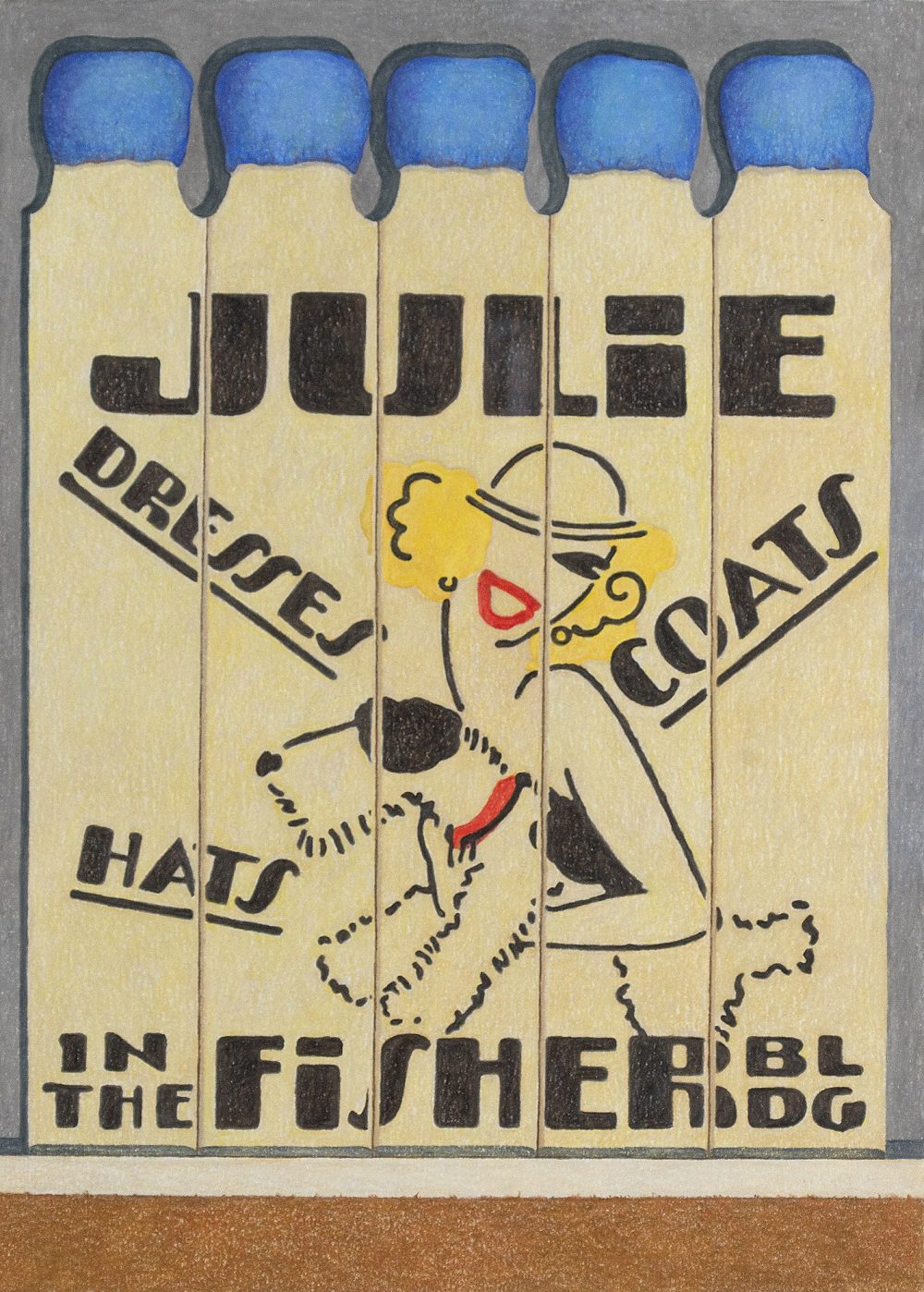
Aaron Kasmin
Always a Show
16th September - 28th October 2021

Gerald Laing
Reclining Figure Relief Painting
Viewing Room
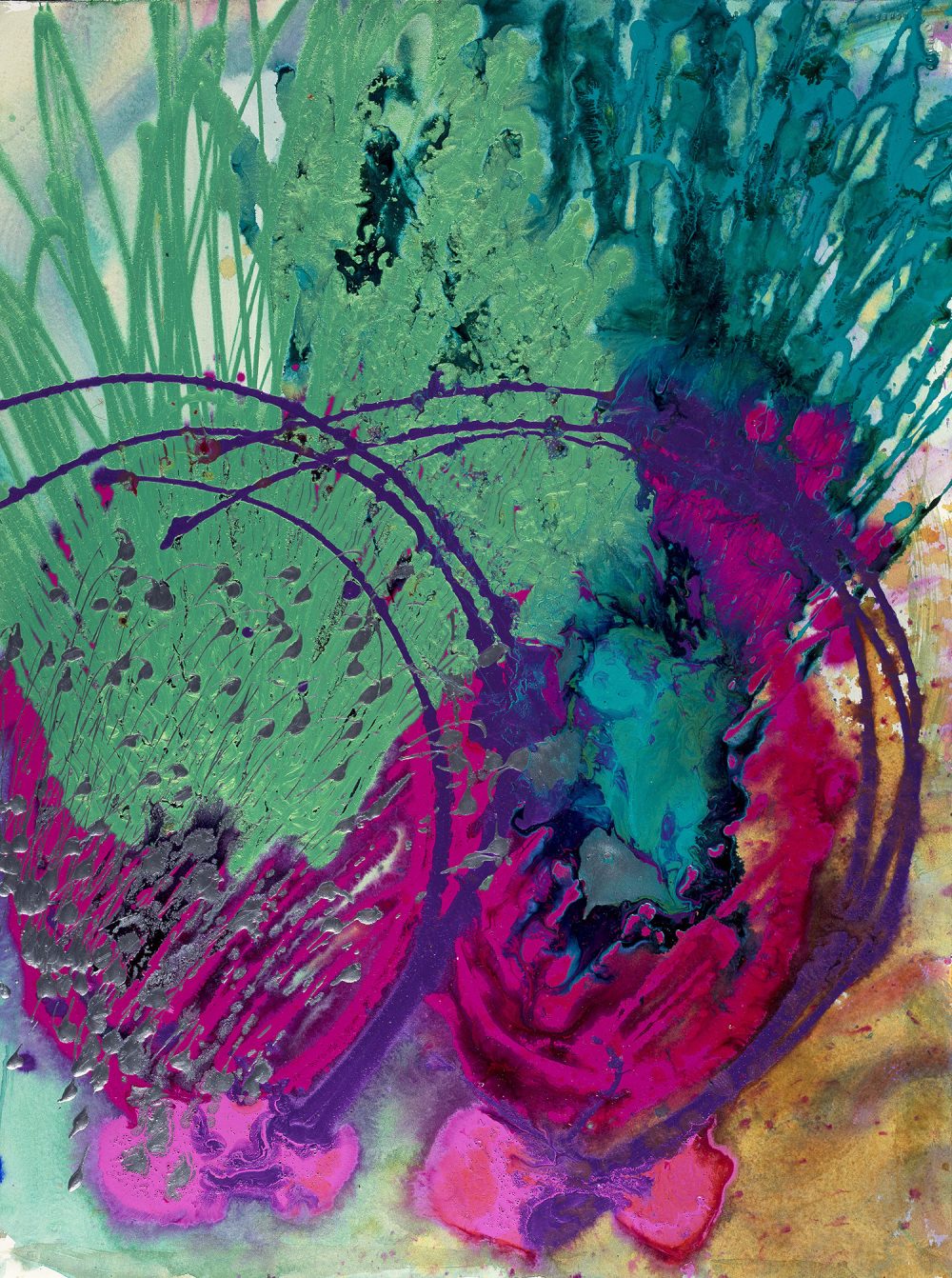
Chihuly
22nd July - 5th September 2021
Online Only
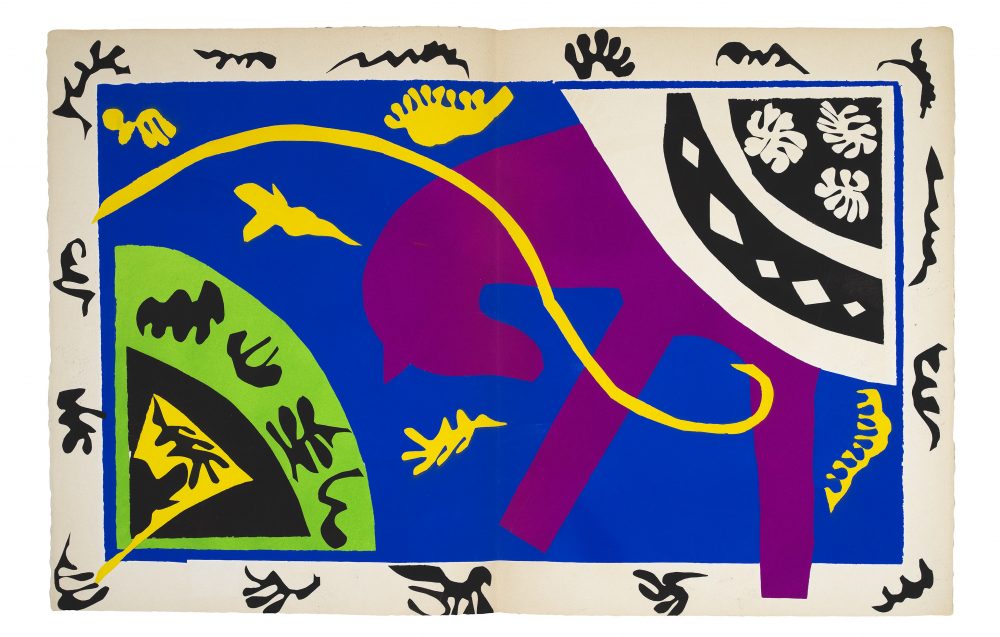
Henri Matisse
Jazz
20th May - 13th June 2021
Online only
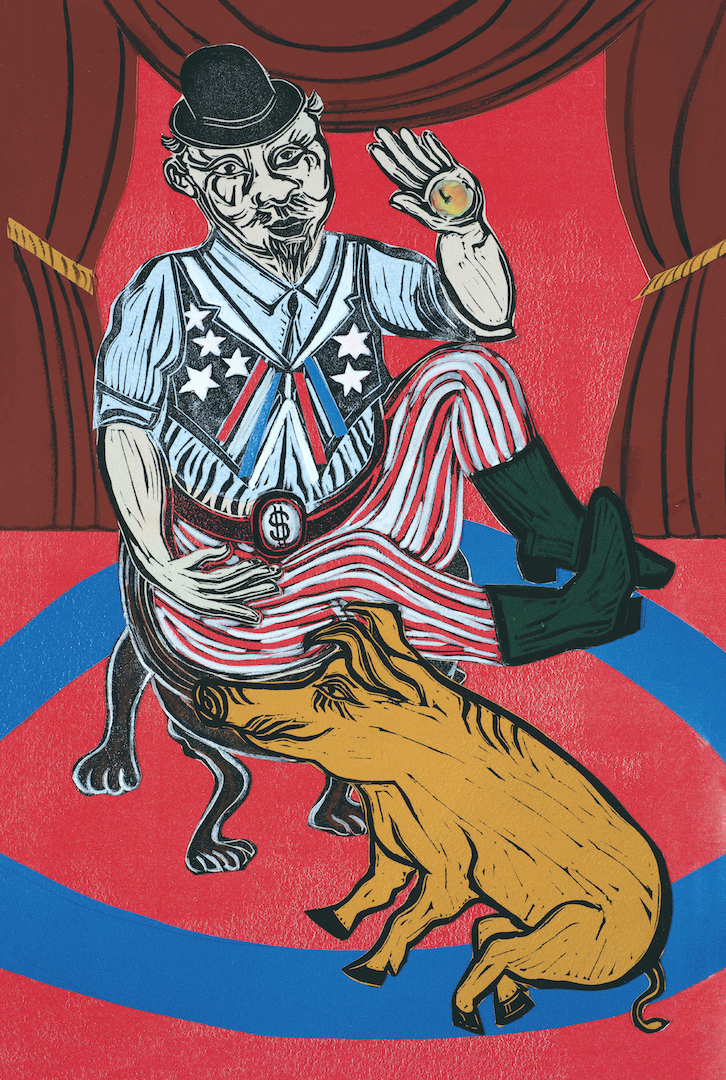
Eileen Cooper
Nights at the Circus
4th March - 14th May 2021
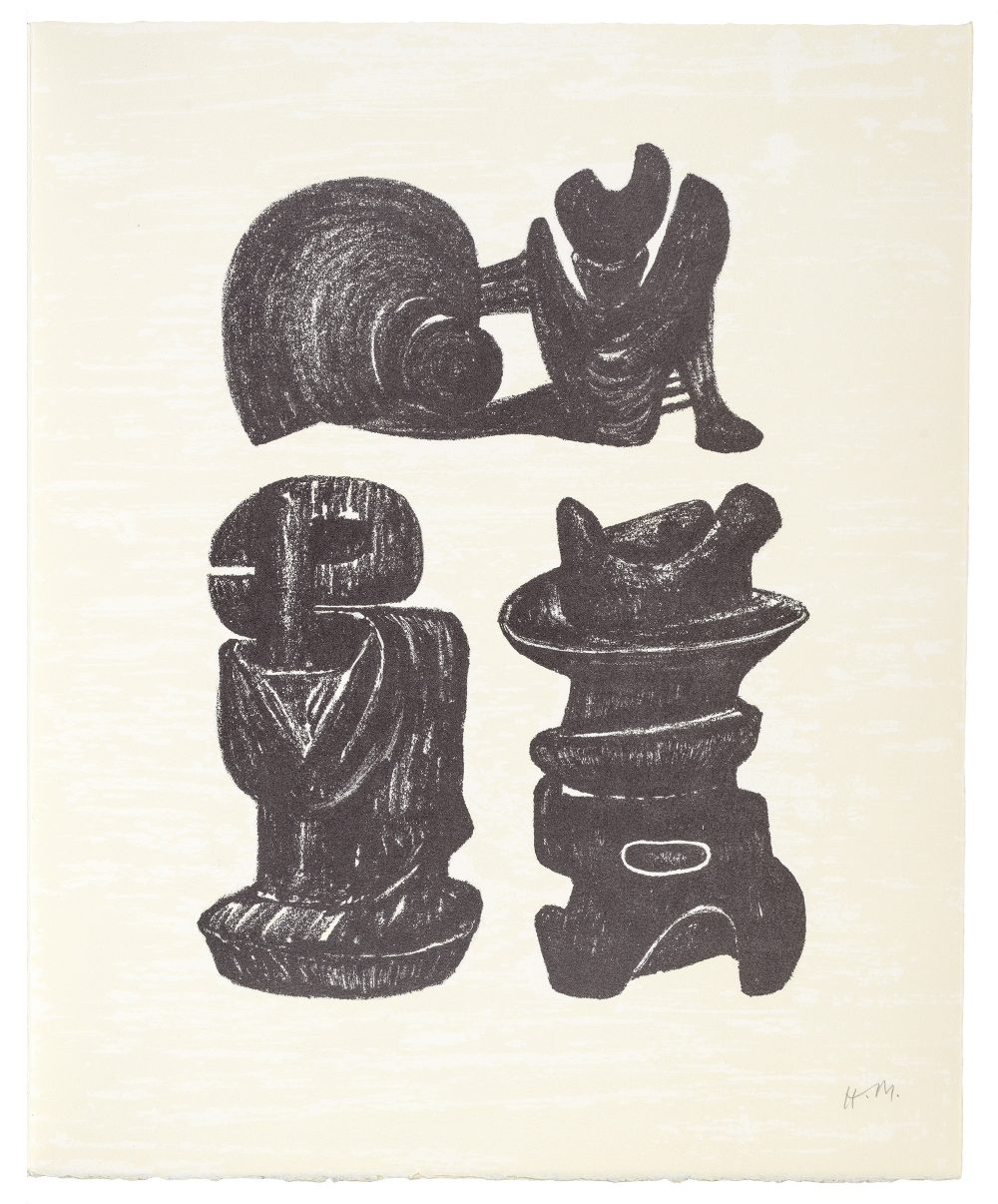
Henry Moore
The Art of Poetry
26th January - 26th February 2021
Online Only

Curated highlights from Emily Tobin
Ring out, wild bells
10th December 2020 - 2nd January 2021
Online only
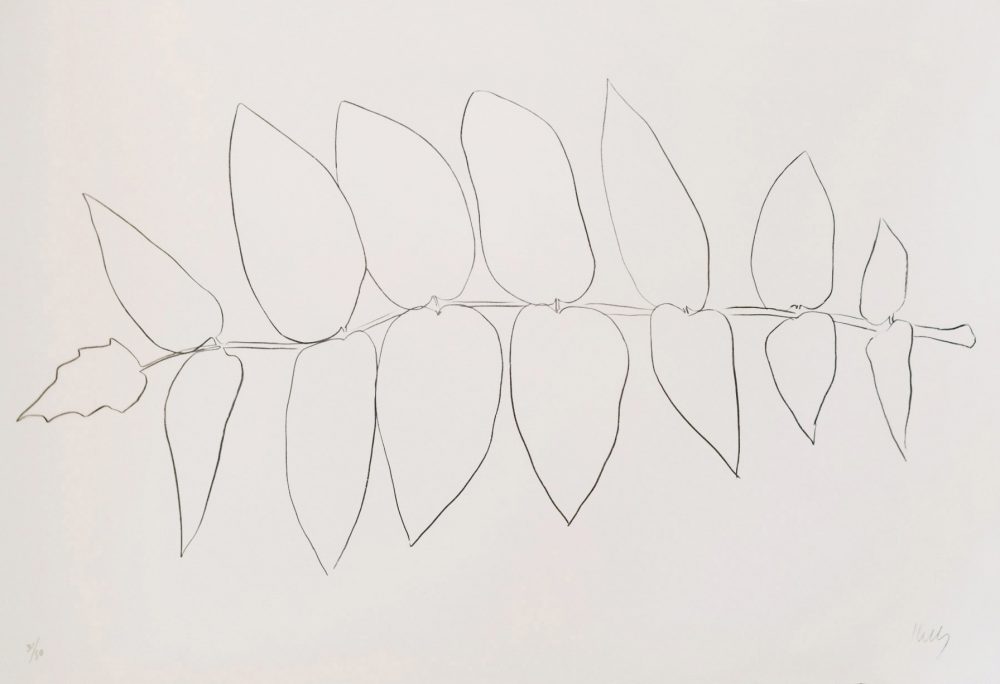
Ellsworth Kelly
Back to Nature
27th November - 20th December 2020
Online Exhibition
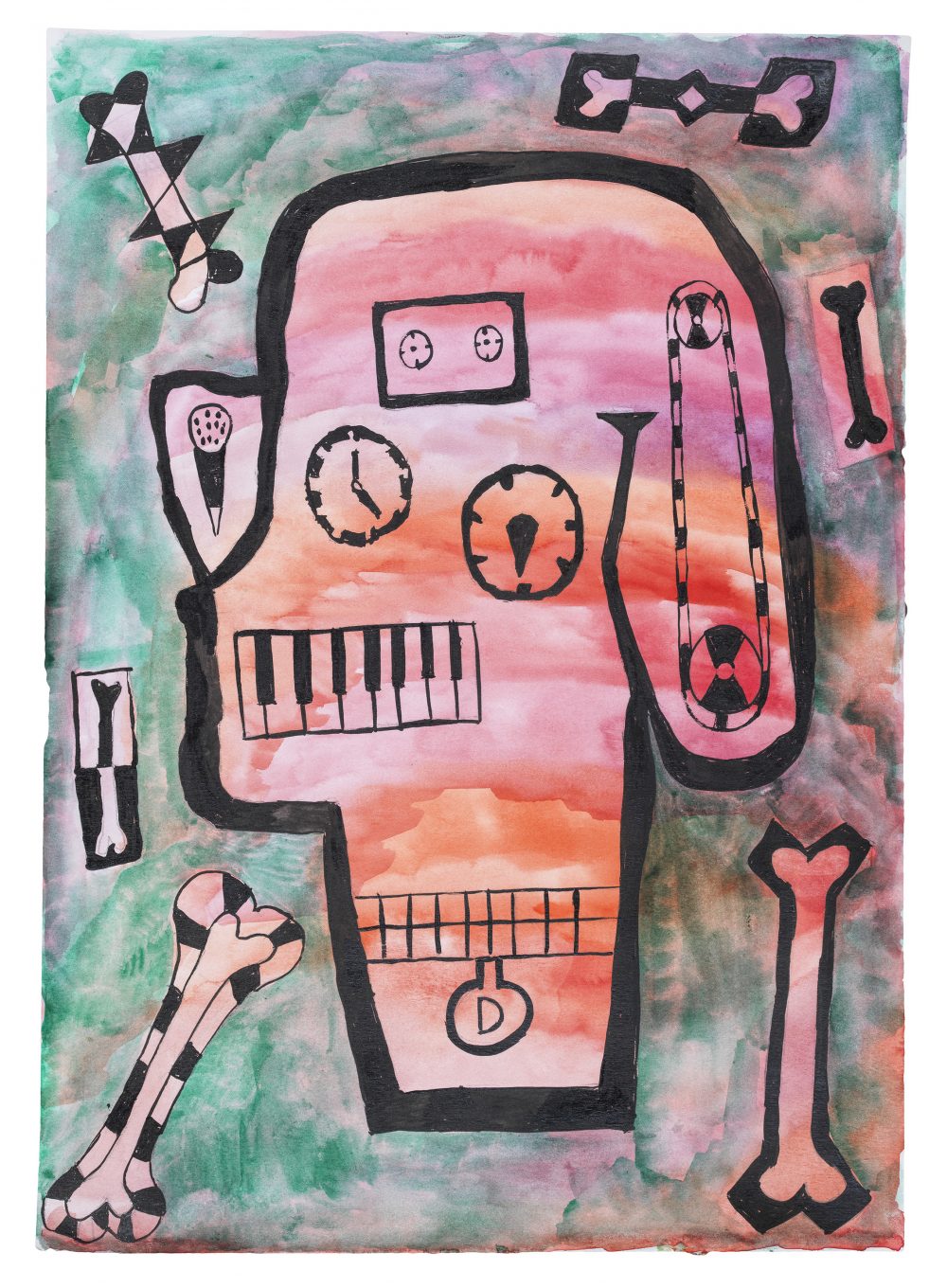
Declan Jenkins
Cinema of lava, cinema of mercury
12th November - 13th December 2020
Online Exhibition with Highlights at the Gallery
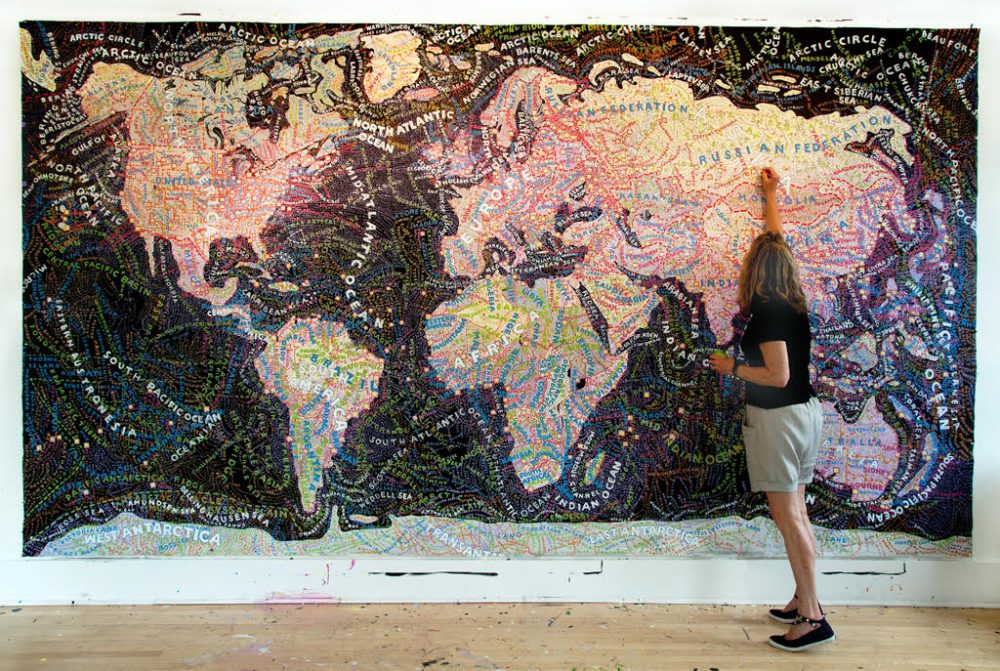
Paula Scher
All Over the Map
9th October - 8th November 2020
Online Exhibition

Howard Hodgkin
Colour Poems
28th August - 30th September 2020
Online only
